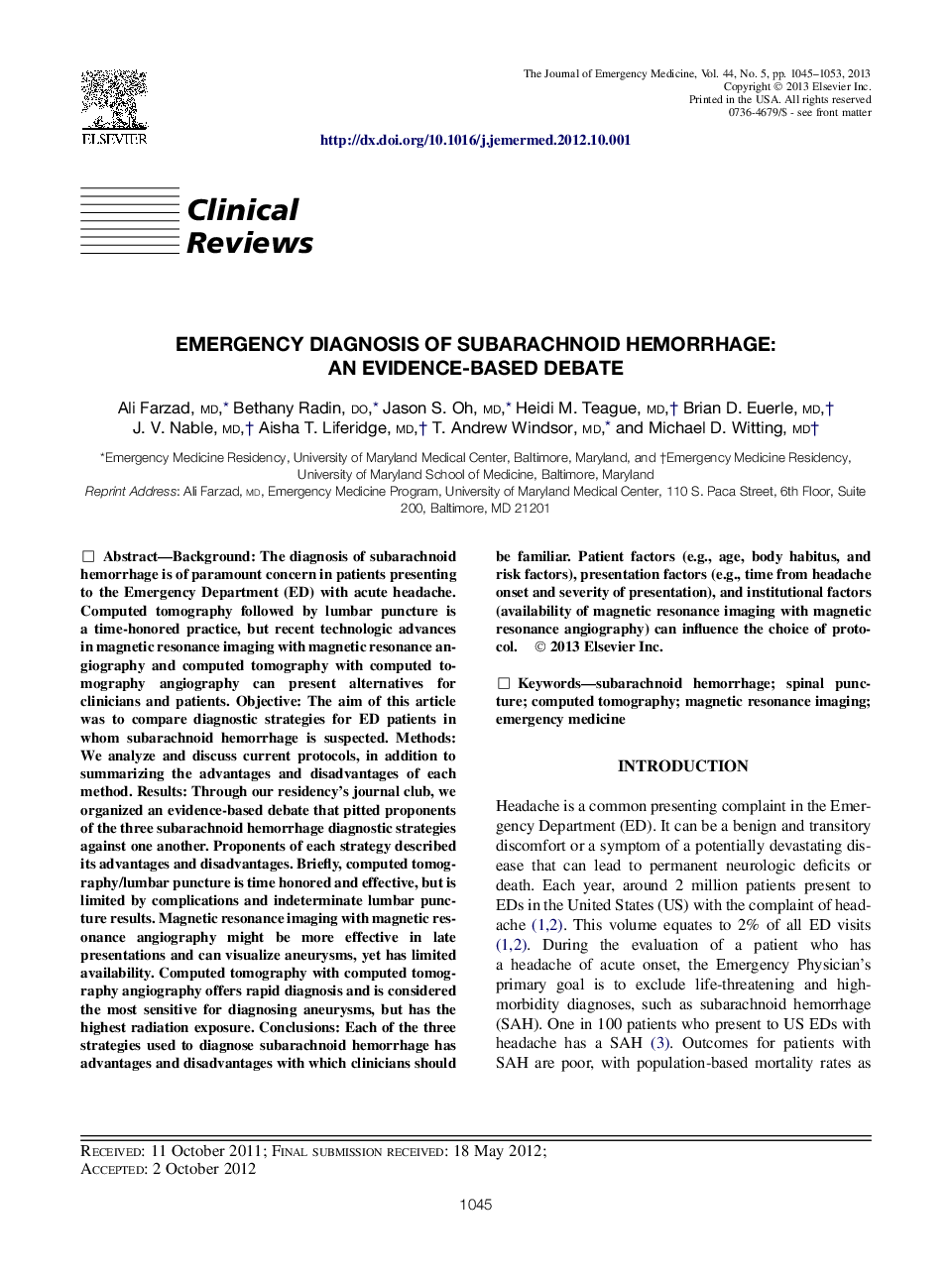| Article ID | Journal | Published Year | Pages | File Type |
|---|---|---|---|---|
| 6085689 | The Journal of Emergency Medicine | 2013 | 9 Pages |
BackgroundThe diagnosis of subarachnoid hemorrhage is of paramount concern in patients presenting to the Emergency Department (ED) with acute headache. Computed tomography followed by lumbar puncture is a time-honored practice, but recent technologic advances in magnetic resonance imaging with magnetic resonance angiography and computed tomography with computed tomography angiography can present alternatives for clinicians and patients.ObjectiveThe aim of this article was to compare diagnostic strategies for ED patients in whom subarachnoid hemorrhage is suspected.MethodsWe analyze and discuss current protocols, in addition to summarizing the advantages and disadvantages of each method.ResultsThrough our residency's journal club, we organized an evidence-based debate that pitted proponents of the three subarachnoid hemorrhage diagnostic strategies against one another. Proponents of each strategy described its advantages and disadvantages. Briefly, computed tomography/lumbar puncture is time honored and effective, but is limited by complications and indeterminate lumbar puncture results. Magnetic resonance imaging with magnetic resonance angiography might be more effective in late presentations and can visualize aneurysms, yet has limited availability. Computed tomography with computed tomography angiography offers rapid diagnosis and is considered the most sensitive for diagnosing aneurysms, but has the highest radiation exposure.ConclusionsEach of the three strategies used to diagnose subarachnoid hemorrhage has advantages and disadvantages with which clinicians should be familiar. Patient factors (e.g., age, body habitus, and risk factors), presentation factors (e.g., time from headache onset and severity of presentation), and institutional factors (availability of magnetic resonance imaging with magnetic resonance angiography) can influence the choice of protocol.
